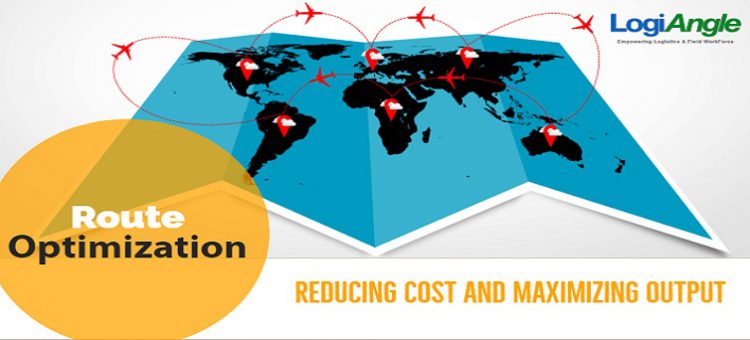Bottlenecks in Last Mile Logistics
OVERVIEW
The logistics industry in India is evolving at an exponential rate and it is because of the juxtaposition of the developing resources such as infrastructure and the available technologies. These advances are helping the organizations managing in last-mile logistics proficiently and with ease. These innovations are centred fundamentally around reducing the time taken so as to increase the value of the organizations. End mile logistics goes about as a column for progress for the retail and web-based business. Lion’s share of the pie in the logistics is the part involved by the transportation, warehousing and distribution segment.
The essential focal point of this article is to discover the potholes in the logistics area, particularly in the transportation, warehousing and conveyance segment and giving gap solutions that are managed productively by the significant player in the logistics business yet these potholes are ignored by the rising and small companies in the logistics division and frequently turns into a speed breaker for progress for them.
BOTTLENECKS
The last mile logistics is very much in-organised and that is affecting the small and emerging businesses operating in the logistics sector. The major problems are listed below that remains unaddressed by the small businesses and that becomes a key differentiator for their growth:
● Transparency in operations
● Operational Efficiency
● Seamless Communication
● Warehouse Management
FOUNDATION OF THE LOGISTICS INDUSTRY
Logistics is the term generally wrongly translated as transportation of products and ventures, yet the logistics sector is much bigger than only transportation of merchandise and enterprises. Truth be told logistics a framework that guarantees smooth development of item in the whole inventory network that is a resultant of legitimate and convenient conveyance of the items and administrations.
In India, the modern strategy kept the assembling unit inaccessible from the retail unit, giving the calculated segment a gigantic chance to fill the hole, yet the issues are big enough to hamper the customer satisfaction, in turn hampering the image of the company.
TRIVIAL CASES IN END-MILE LOGISTICS
Case1: Customer “A” scheduled his delivery and the delivery executive has picked up the order from the hub and is on its way to deliver the goods to the customer, but due to bad traffic or maybe due to road blockage the driver is delayed. The customer will place a call to the customer service executive. The customer service executive would provide him with the contact number of the hub and then the customer calls the hub and asks the manager about the status of the order. The probable answer would be “Sir the Delivery Executive (DE) has picked up the order and is on your way long back” The hub manager doesn’t have any idea about where the delivery executive is currently. So he may call the DE but due to the low battery, the phone is switched off. The hub manager is now clueless. It might be so possible that he is having a huge fleet of DE and as everything is on paper he may take time to find the exact details of the customer and then he needs to find the driver assigned. This process becomes too messy to handle.
Case2: Mr “B” is a distributor and is dealing with multiple clients at multiple locations. It is quite evident for establishing a healthy relationship with the customers he will be providing some discounts from his side, but it is also evident that he won’t be providing the same discount to all his customers. The real problem arises at this point, if he was having a few clients, paperwork would have helped him pass the situation but not when he is dealing with a list of clients and different list prices.
Case3: A logistics company dealing in last mile delivery has around 15 Delivery executives to fulfil their daily requirements and on an average, the unit receives 150 consignments. So every delivery executive is assigned to take 10 consignments. But it is very possible that the delivery locations are overlapping that is making the work done irrelevant and at that extra time, the opportunity cost would be greater.
INTRODUCTION TO LOGIANGLE:
LogiAngle is a technology platform to manage and optimise last-mile logistics and field workforce. It is equipped with cloud-based latest technology attack to bring an end to end visibility in logistics operation. This platform brings all stakeholders to plan, manage, communicate and execute on real-time information. Its flexibility and modularity help to integrate with the existing system and bring about an innovative approach to increase field efficiency by 30% to 40%.
HOW CAN LOGIANGLE ANCHOR YOUR SUCCESS?
● Providing an End to End Visibility:
Connected transportation is not a dream in the year 2019. It can be achieved by cutting edge technologies such as edge computing, Internet of things that help the organisations in digitizing their supply chains, removing redundancies and opacity from the system, enabling end to end visibility, optimised and timely decisions. Using this technology, it helped the organisation in removing the delivery errors, improved accuracy in inventory management and a significant cut in their labour expenses, that ultimately helps blossom their bottom line
● Providing assistance in Warehouse Management:
A major problem for any warehouse manager is to constantly keep a track of the inventories and reorder when it reaches the re-order level. The manager needs to keep track of the inventory pricing mechanism and needs to be correct every time a record is pulled off, to have an exact look of the profitability. The software helps keep a track of the inventories in real-time and provides intimidation when it’s the right time to order for the stocks. It can avoid internal congestion and mismanagement or human errors to provide an accurate report for the managers to have proceeded further. Live tracking with the help of optimised route and real-time analytics allows logistics supervisors to carry out the businesses seamlessly
● Providing assistance in achieving operational excellence:
Businesses operating in last-mile logistics has a huge task of maintaining delivery schedules like pickup and delivery of orders or a field representative or technicians. Managing these workforces on the field becomes very difficult. With the use of connected mobile devices embedded with algorithms that efficiently capture data, manage and share it in real time with the owners. This helps to communicate proactively with the riders anytime.



